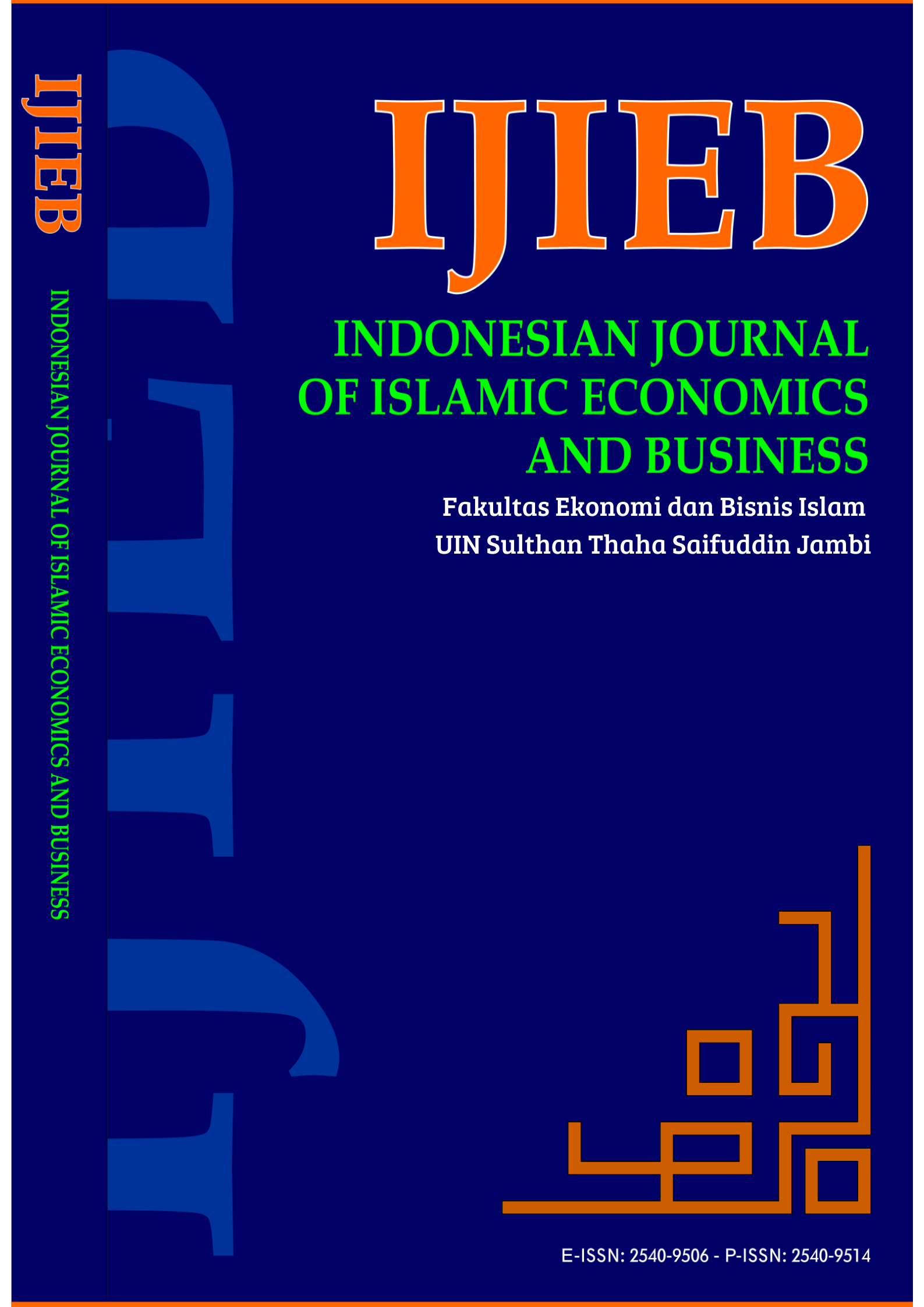Analisis Pengembangan Sumber Daya Manusia pada PT. Surya Artha Nusantara Finance (SANF)
DOI:
https://doi.org/10.30631/ijoieb.v7i2.1578Keywords:
Human resource, Human capital, development, managementAbstract
The objectives of this research are to identify and explain the implementation of human resource development management in PT. Surya Artha Nusantara Finance along with the performance of human resource development management of PT Surya Artha Nusantara Finance today. The type of research that is used in this research is descriptive research with a qualitative approach. The focus of research is divided into two parts, the first focus is about the implementation of human resource development in PT Surya Artha Nusantara Finance (SANF). The second focus is to know the performance of human resource development in PT Surya Artha Nusantara Finance today. The collection of data by the researcher is based on primary and secondary data. The results and issues evaluation which are undertaken from this research shows the implementation of human resource development SANF is in conformity with the Astra Human Capital Management (AHCM) consisting of Assessing Training Needs, Designing Training Program, Delivery Training, and Training Evaluation. The
current performance of human resource development SANF is going through the stages of systematic and policies applied in the process of people development based on the company's needs for labor in the activities undertaken. Obstacles that occur during the human resource development a rise more dominant from the internal
References
A.A. Anwar Prabu Mangkunegara. (2001), Manajemen sumber daya manusia perusahaan. Bandung : Remaja Rosdakarya.
Arikunto, Suharsimi. 2002. Prosedur Penelitian: Suatu Pendekatan Praktek.
Jakarta: Rineka Cipta.
Armstrong,M.1997. A Handbook of Personnel Management Practice- 6th Edition.
London: Kogan Dage.
Bohlander, George., and Snell, Scott. (2010). Principles of Human Resource. Management, 15th ed. Mason, OH: South Western – Cengage Learning
Danang, Sunyoto. 2012. Manajemen Sumber Daya Manusia. Jakarta: PT Buku Seru
Denby, S. (2010). The importance of training needs analysis. Industrial and Commercial Training, 42(3), 147–150. https://doi.org/10.1108/00197851011038132
Dessler, Garry. 2006. Human Resources Management. New Jersey: Pearson Education, Inc.
Gaol, CHR. Jimmy.L.2014. Human Capital. Jakarta: PT Gramedia
L. Hasyim, S. (2020). Manajemen Sumber Daya Insani. Pendidikan Multikultural Khan, B., Farooq, A., & Hussain, Z. (2010). Human resource management: an Islamic perspective. Asia Pacific Journal of Business Administration, 2(1),
-34.
Kumar;Basu, A. (2013). Value Added And Profitability: Role Of Human Resource. 7(2), 64–78.
Mangkunegara, Prabu Anwar.2011. Manajemen Sumber Daya Manusia Perusahaan. Bandung: PT.Remaja Rosdakarya
Mangkuprawira, Sjafri. 2002. Manajemen Sumber Daya Manusia Strategik,
Cetakan Ketiga. Jakarta: Penerbit Ghalia.
Manullang, M. 2004. Manajemen Personalia. Yogyakarta: Gajahmada University Press.
Moleong, Lexy.J. 2011. Metode Penelitian Kualitatif. Jakarta: PT. Remaja Rosdakarya.
Panggabean, Mutiara Sibarani. 2004. Manajemen Sumber Daya Manusia. Ghalia Indonesia, Jakarta.
Raymond,A.Noe. 2010. Manajemen Sumber Daya Manusia Mencapai Keunggulan Bersaing. Salemba Empat. Jakarta.
Rivai,V. 2008. Manajemen Sumber Daya Manusia Untuk Perusahaan: Dari Teori ke Praktik:Jakarta: PT.Raja Grafindo Persada.
Simamora, Henry. 2014. Manajemen Sumber daya Manusia. Yogyakarta : Adiyta Media
Sugiyono. 2008. Metode Penelitian Kuantitatif Kualitatif dan R&D. Bandung : ALFABETA
Tilon, Danny Albert. 2013. Pelatihan dan Pengembangan SDM pada Restoran A&W di City of Tomorrow Surabaya.Program Manajemen Bisnis, Program Studi Manajemen. Universitas Petra Surabaya.
Wijayanto, Dian. 2012. Pengantar Manajemen. PT. Gramedia Pustaka Utama, Jakarta
Yusanto, Ismail & Widjajakusuma. 2003. Manajemen Strategis Perspektif Syariah.
Jakarta: Khairul Bayaan.
Nengsih, T. A., Bertrand, F., Maumy-Bertrand, M., & Meyer, N. (2019). Determining the number of components in PLS regression on incomplete data set. Statistical Applications in Genetics and Molecular Biology, November. https://doi.org/10.1515/sagmb-2018-0059
Nengsih, T. A., Nofrianto, N., Rosmanidar, E., & Uriawan, W. (2021). Corporate Social Responsibility on Image and Trust of Bank Syariah Mandiri. Al-Iqtishad: Jurnal Ilmu Ekonomi Syariah, 13(1), 151–170. https://doi.org/10.15408/aiq.v13i1.18347
Rosmanidar, E., Hadi, A. A. Al, & Ahsan, M. (2021). Islamic Banking Performance Measurement: a Conceptual Review of Two Decades. International Journal of Islamic Banking and Finance Research, 5(1), 16–33. https://doi.org/10.46281/ijibfr.v5i1.1056
Subekti, A., Tahir, M., Mursyid, & Nazori, M. (2022). the Effect of Investment, Government Expenditure, and Zakat on Job Opportunity With Economic Growth As Intervening Variables. Journal of Southwest Jiaotong University, 57(3), 102–112. https://doi.org/10.35741/issn.0258-2724.57.3.9
Umar, M., & Sukarno, S. (2022). The influence of fiqh insights and science literacy on student ability in developing Quran-based science. International Journal of Evaluation and Research in Education, 11(2), 954–962. https://doi.org/10.11591/ijere.v11i2.22012
Usdeldi, U., Nasir, M. R., & Ahsan, M. (2022). The Mediate Effect Of Sharia Compliance on The Performance of Islamic Banking in Indonesia. Jurnal Keuangan Dan Perbankan, 26(1), 247–264. https://doi.org/10.26905/jkdp.v26i1.6158
Downloads
Published
Issue
Section
License
Copyright (c) 2022 Author

This work is licensed under a Creative Commons Attribution-ShareAlike 4.0 International License.

This work is licensed under a Creative Commons Attribution-ShareAlike 4.0 International License.














